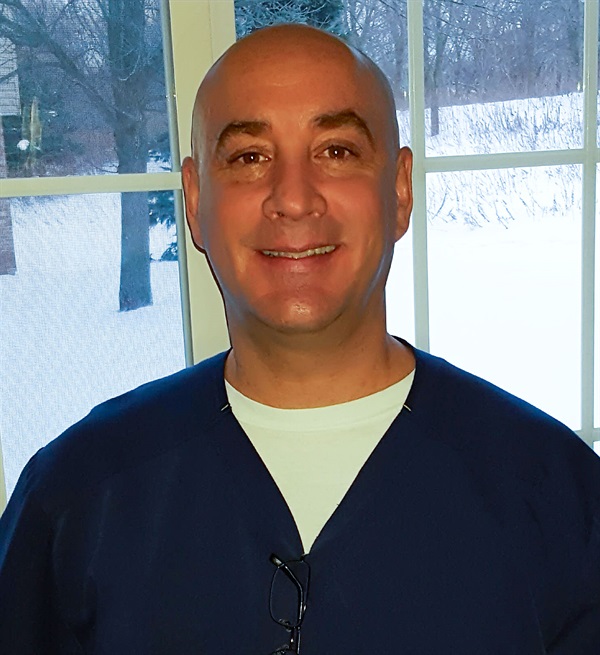Local Anesthetic Continuing Education July Illinois 2018
These courses are available to you free of charge because you are an international townie.
Speaker: Dr. Mark Donaldson
This course is specifically designed to mitigate any concerns dental staff may have when working in offices where nitrous oxide – oxygen inhalational sedation is provided. Perfect for every clinician, and team member who may be under the impression that the chronic environmental exposure to nitrous oxide could result in some type of fetotoxicity or teratogenicity in an expectant employee; this program debunks that myth and others concerning the safety of Nitrous Oxide.
Speaker: Elvira V. Lang, MD, PhD
This course helps dental practitioners reduce patient anxiety and pain through advanced rapid rapport skills, awareness of verbal and nonverbal cues, correct use of suggestions, and the reframing of distressing thoughts and pain by hypnotic language.
Speaker: Dr. Mark Donaldson
Nitrous oxide – oxygen inhalation sedation continues to be the safest modality dentists have in providing in office sedation. While the drug itself is extremely safe, manufacturers continue to develop additional fail safes to help insure the safe delivery of this gas. This program reviews the nitrous oxide delivery system safety features currently in use.
Speaker: Drs. Mark Donaldson and Jason H. Goodchild
Minimal Adult Sedation training is online exclusively on Dentaltown! Delivering 19.5 CE hours, this continuum meets the number of didactic hours and patient experiences outlined by the current ADA teaching guidelines.
Speaker: Dr. Bryan McLelland
Exparel is an extended release encapsulated Bupivacaine, which can numb an area of the body to relieve pain after surgery or medical procedures, and dental procedures. In this course you will learn about how Exparel can help reduce the opioid epidemic, and how to integrate Exparel into your clinic's routine without losing money.
Speaker: Jason H. Goodchild, DMD
Despite the frequency that oral healthcare providers use local anesthetics, misconceptions remain. The goal of this presentation is to discuss several common 'myths' surrounding local anesthesia while incorporating up-to-date literature-supported learning issues. This course will review and update local anesthetic history, techniques, equipment, and current research. This course will give everyone additional tips and tricks to help make local anesthesia use more safe and effective.
Speaker: Dr. Daniel Uzbelger
This course describes how the accessory innervation anesthetic protocol can be used for profound pulpal anesthesia of the adult posterior mandible. It will revise how the accessory innervation theory plays a pivotal role in the inferior alveolar nerve block failure rates as well as different clinical approaches to overcome these obstacles.
Speaker: Dr. Kenneth J. Polke
This course identifies the advantages of offering IV sedation to the general public as a routine procedure in the general dental practice and highlights its benefits to the administering practitioner.
Speaker: Dr. Daniel Uzbelger Feldman
This course describes how the accessory innervation anesthetic protocol can be used for profound pulpal anesthesia of the adult posterior mandible. It will discuss how the accessory innervation theory plays a pivotal role in the inferior alveolar nerve block failure rates, as well as different clinical approaches to overcome these obstacles.
Speaker: Charles D. Schlesinger DDS, FICOI
This course details the concept of anesthetic buffering. The benefits are multifold and are supported by not only by the science in the literature, but backed by clinical evidence.
Speaker: Dr. James G. Hupp
This course describes strategies to obtain profound anesthesia in order to perform comfortable endodontic treatment. Additionally, current evidence will be presented regarding the use of analgesics and antibiotics for the post treatment care of endodontic patients.
Speaker: Fabio Velotti, M.Sc. Eng Bernardo Verrengia, C. Chem MRSC Deborah S. Laird, BS Pharm, RPh
This course is designed to educate the dental-health professional regarding the potential superiority of articaine 4 percent in relation to lidocaine 2 percent in dental anesthesia.
It is also intended to illustrate the differences between these products regarding their chemistry, pharmacology, metabolism and use.
Speaker: Jason H. Goodchild, DMD
This course provides an update of the clinical pharmacology of local anesthetic agents and formulations used presently in dentistry and will review nine factors that may aid the practitioner in achieving better success of the traditional IANB technique.
Speaker: by Dr. M. Toma, Dr. M. Berghahn, S. Loth, B. Verrengia, Dr. L. Visani and F. Velotti
This course is designed to educate the dental health professional concerning the occurrence and overall incidence of reported local anesthetic-induced paresthesia. In addition, it will serve to illustrate the potential causes of such paresthesia and to investigate whether the use of articaine is related to a higher frequency of occurrences of these adverse events.
Speaker: Mark Hyman DDS and Mic Falkel DDS
This presentation will begin with Dr. Falkel reviewing the science of local anesthesia including: the time course of analgesia, the factors that contribute to inconsistent anesthetic performance and how the body must overcome the acidity of local anesthetic injections before the anesthetic can take effect. Dr. Hyman will then discuss the benefits that buffered anesthetic provides for the practice's activities and workflow, and will explain how to better-set expectations around success.
Online CE Activity
519
CE Courses Online
627,603
Total CE Course Views
edkinsansetracten.blogspot.com
Source: https://www.dentaltown.com/onlinece/category/1/anesthesia













